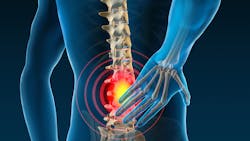Body Armor Carriers as Load Bearing Vests
If you are old enough, and most especially if you are a military veteran, you remember the infamous “LBE”—load bearing equipment or load bearing vest (LBV). It was designed to carry spare magazines, hand grenades, a bayonet, a compass pouch, a field-dressing, two canteens and maybe even a large utility pouch on the back. While it was specifically designed to support a soldier in combat, the LBE/LBV was adapted by many creative people to carry other items. It became a foundation of sorts for carrying whatever gear a person could adapt it to for whatever purpose the person could perceive from recreational hiking to combat.
As time passed and nylon equipment evolved, combat troops and law enforcement officers graduated from LBE to equipment vests to plate carriers and more. The old LBE was designed to be worn over whatever your outermost garment was but was separate from flack jackets, any type of body armor, etc. In today’s world, more often than not, most externally worn carriers for body armor are designed to carry equipment as well as the body armor panels and plates themselves.
With a long documented history of causing back problems, the traditional officer’s gun belt has carried a plethora of equipment to include the handgun, magazines, OC spray, TASER, baton, radio, handcuffs, nitrile gloves and more. With the evolution of external body armor carriers and their dual functionality of carrying equipment, a lot of that gear can be removed from the gun belt, alleviating some long-term orthopedic health concerns.
Recognizing that these armor carriers are now doubling, quite frequently, as equipment carriers, let’s take a look at some of what they most often carry for the average patrol officer. Sure, if we discuss what they carry for special operations officers the list is vast and varied. Every SWAT officer custom equips his/her own vest to carry the equipment needed based on assignment. But for the average patrol officer? What is carried? What should be carried? How much of it can be customized?From the belt to the vest
- The EMD. One of the first items that should be moved from belt to vest would be the electro-muscular-disruption device (EMD or electronic control device)—most commonly referred to as a TASER. Early on in the growing widespread use of TASERs, the biggest mistake an officer could make was drawing his firearm when he meant to draw his TASER. To avoid this confusion, TASERs were often worn crossdraw or on the opposite side of the body from the handgun. Moving the TASER from the belt to the vest and also to the other side of the body (crossdraw) helps to minimize the chances of such a mistake, even during the most stressful of times.
- The handcuffs. Another item—and often more than one—that should be moved is handcuffs. The traditional position for handcuffs “back in the day” was the small of the back. When an officer was really motivated and carried two pair, they were most often placed at either kidney. None of that promoted comfort. Moving the handcuffs from belt to vest puts them in front, easily accessed, and not putting pressure anywhere on the officer’s back.
- The radio. Once more common without a “shoulder microphone” than with, the radio was also a perpetual presence on the officer’s gun belt. Usually carried on the support side (opposite weapon) at the hip, the radio used to present a significant amount of weight. With modernization and miniaturization, the radios are smaller and lighter and more often than not now have a shoulder microphone/speaker. Moving the radio off the gun belt and onto the vest, off to either side of the front but still preferably away from the weapon helps to reduce weight on the hips.
- The flashlight. If carried on the vest, the flashlight should be carried so that it is easily accessible to either hand and doesn’t impede the access to spare magazines, TASER, or other tools.
- Spare magazines. If you choose to move your spare magazines to your vest, it’s important that you remember the consistency of your training and how your brain/body will work under high stress. Keep those magazines on the same side of the vest as they were on the gun belt. Keep the bullet noses pointed toward the strong side and make sure that they aren’t so high on your vest that you can’t easily withdraw them when you need them.
Moving those items off the gun belt would typically leave the handgun, spare magazines, baton, flashlight, and perhaps a pair (or two) of nitrile gloves on the belt.
Where the nitrile gloves are concerned, especially in today’s day and age of heightened awareness of personal protection equipment, it’s recommended that you carry a pair on your gun belt even if you carry one or more pair on your vest. There is a wide variety of pouches available that will mount on your vest or to other pouches and capable of carrying up to five pairs of nitrile gloves.
Beyond being used as a load-bearing device, the armor carrying vest of the future may serve other purposes as well. What used to be science fiction is quickly becoming science fact and more than one commercial program has suggested the possibility of mounting life-saving equipment in the armor carrier. With the development of miniaturization technology and the now seemingly permanent data connection between officer and vehicle or headquarters (or both), it’s possible that the future vest will monitor the officer’s life signs/vitals and report back or send a signal if something unhealthy is detected.
The vest of the future may monitor things such as pulse rate, blood pressure, blood oxygen levels, body temperature, and heart rhythm. If an irregular heartbeat is detected, maybe an integrated automatic electronic defibrillator could be triggered by the controlling monitor unit. While it’s difficult to imagine such innovations being built into today’s vest carriers, we’ve already come so far—imagine a decade from now.
About the Author
Lt. Frank Borelli (ret), Editorial Director
Editorial Director
Lt. Frank Borelli is the Editorial Director for the Officer Media Group. Frank brings 20+ years of writing and editing experience in addition to 40 years of law enforcement operations, administration and training experience to the team.
Frank has had numerous books published which are available on Amazon.com, BarnesAndNoble.com, and other major retail outlets.
If you have any comments or questions, you can contact him via email at [email protected].

